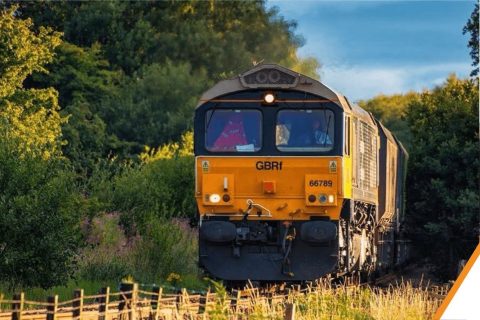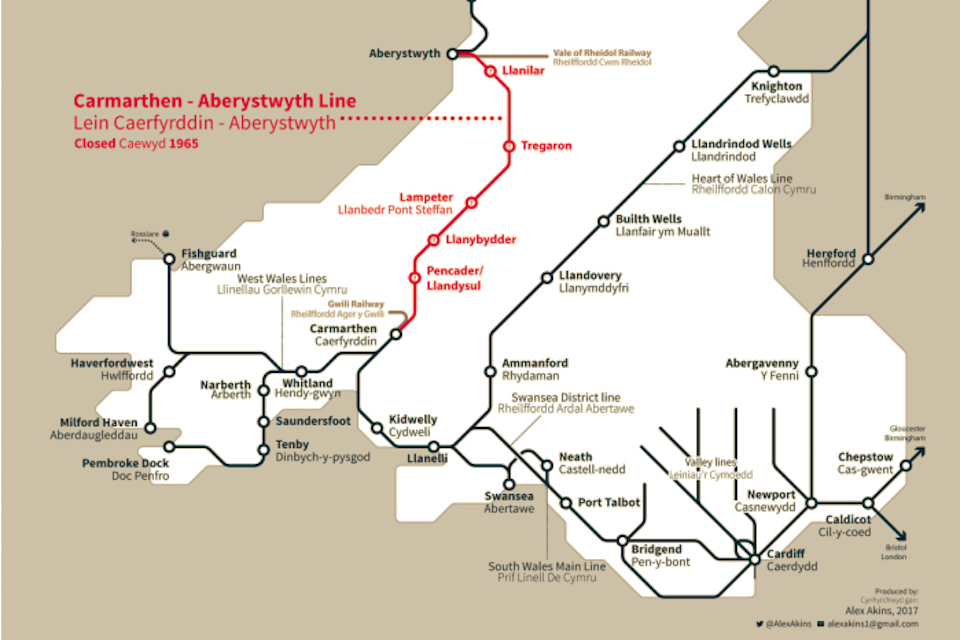
Welsh Carmarthen-Aberystwyth line reopening unlikely
Freight operators in Wales are watching the efforts to reinstate the railway line that directly links Carmarthen and Aberystwyth. The line closed in 1965, but a reinstatement could help accelerate the resurgence of Welsh rail freight. However, there is no universal support for the project.
The Welsh Government commissioned a feasibility study into reopening the line in 2018. That document said there were no major obstacles to restoring the line, estimating it would cost approximately 775 million pounds (about 900 million euros). Additionally, Traws Link Cymru, which was set up in 2013 to campaign for the line to be reopened, published a report in 2020 considering factors it said should feed into any assessment of the economic viability of the line.
However, at a recent meeting of the Thriving Communities Overview and Scrutiny Committee of Ceredigion County Council, Professor Stuart Cole, an independent transport consultant, ruled out the prospects of the line reopening for decades, saying that his view that the connection between Carmarthen and Aberystwyth has no possibility of being built in the next thirty years.
Secure funding to restore freight and passenger traffic
Professor Cole’s bleak assessment of the prospects for re-establishing a mixed-traffic rail connection is, he says, based on the economics of operating railways in a rural area. Professor Cole, who created the TrawsCymru network and Bwcabus, said that road-based solutions were better for the Aberystwyth – Carmarthen route and for other areas in Wales where once there had been a railway. However, other rail lines, such as the Far North Line in Scotland, have recently seen their future better secured by embracing freight operations similar to those possible in Wales.

Traws Link Cymru chairman Mike Walker described the response as “deeply disappointing” and urged the Welsh Government to bring pressure on Westminster to secure the necessary funding to restore the line. Mr Walker said that this is a railway line that should never have been closed in the 1960s, and almost certainly would still be open today had contemporary economic and social factors been taken into consideration when the closure decision was made. “We have only to look at the reopened Borders railway between Edinburgh and Tweedbank so see the social and economic stimuli that a new railway can bring to a region,” Mr Walker added.
Reliable connections across the whole of Wales
The line was a popular means of transportation for both passengers and freight throughout the 19th and early 20th centuries. Freight operations over the years included the transport of coal and agricultural produce to the coast for export. During World War II, the line was also used for transporting munitions and military equipment. However, in the second half of the 20th century, the popularity of the railway declined, and the line faced a number of challenges, including competition from road transport and a lack of investment. Passenger services were withdrawn in 1965, with vestiges of freight traffic persisting until 1970.

Traws Link Cymru has been campaigning for a decade to convince the public of the need for a reliable rail service which will connect the entire nation much more effectively. The campaigners remain steadfast in their belief that one of the only ways to solve the issues faced by west Wales in terms of poor infrastructure, poverty, and depopulation, is to build a rail corridor in west Wales. Traws Link Cymru would like to ensure that any proposal to use the former track bed, of which 97 per cent is untouched, should come with absolute guarantees that a reinstated railway will take precedence over any future development.




